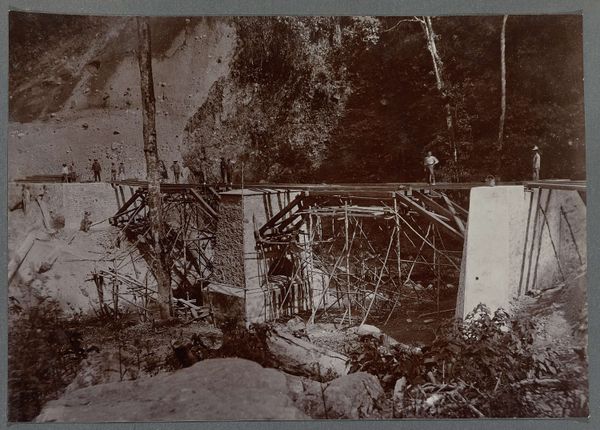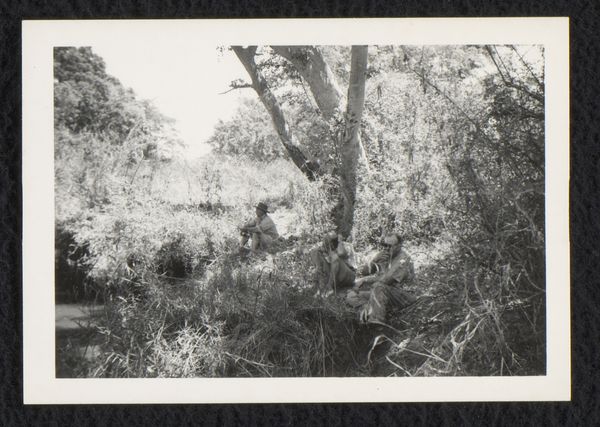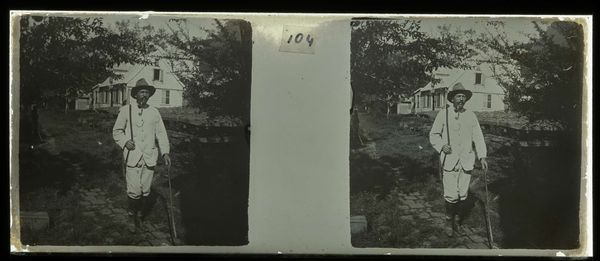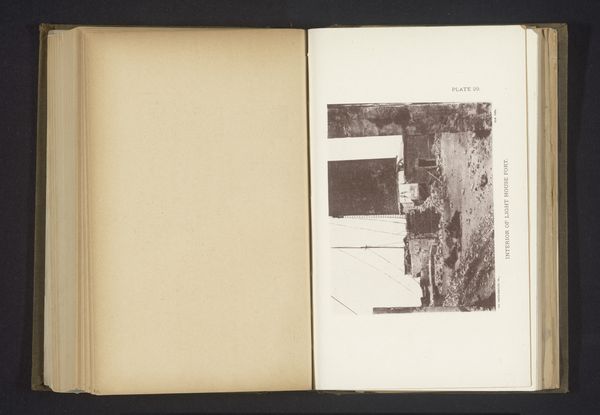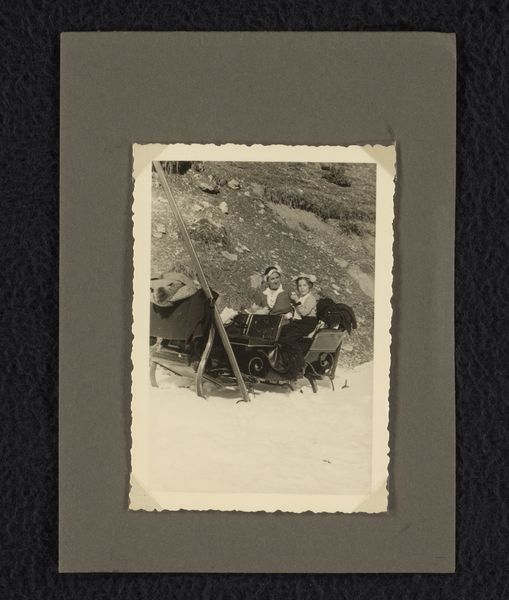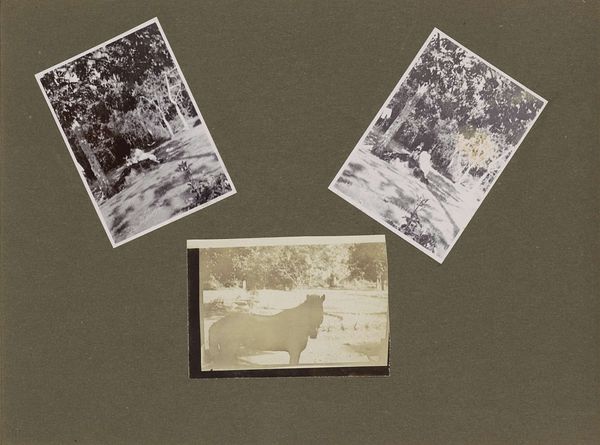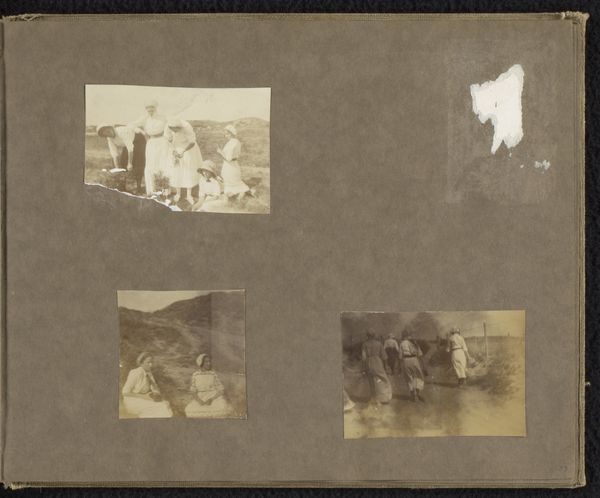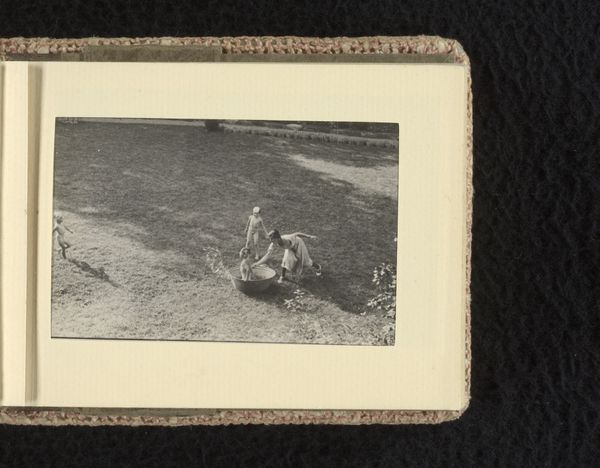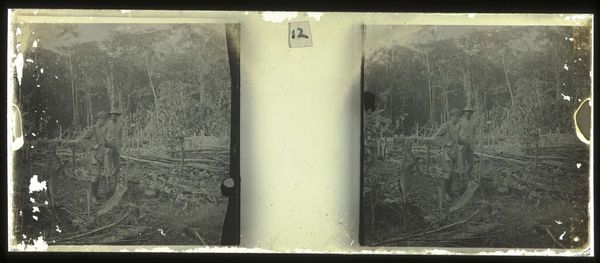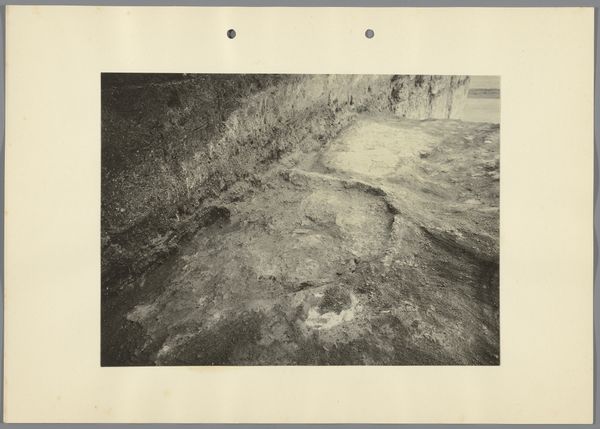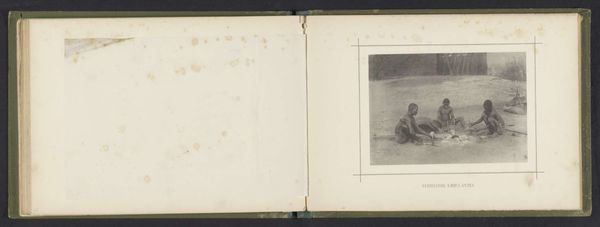
print, photography, gelatin-silver-print
#
print photography
# print
#
war
#
landscape
#
archive photography
#
photography
#
historical photography
#
gelatin-silver-print
#
realism
Dimensions: height 6 cm, width 9 cm
Copyright: Rijks Museum: Open Domain
Editor: This photograph, titled "Dode Nederlandse soldaat voor een barak" or "Dead Dutch Soldier in front of a Barrack", was taken anonymously sometime between 1940 and 1945. It's a gelatin silver print, and it's stark. What stands out is the unsettling contrast between the seemingly ordinary barrack and the soldier lying prone in the foreground. What do you see in this image, beyond that initial jarring impression? Curator: I see a devastating indictment of war, captured with chilling realism. The broken windows, the discarded weapons... these details contribute to a narrative of sudden violence and disruption. We must also consider the socio-political context: The Netherlands under Nazi occupation. This image, though anonymous, becomes a powerful document of resistance and the immense human cost of that struggle. Who was this soldier? What were his dreams? The anonymity becomes a symbol for the countless untold stories of the victims of war. Do you think the choice of black and white photography enhances this effect? Editor: Absolutely, the lack of color strips away any romanticism. It feels immediate, like a raw, unedited document. But what about the composition itself? The barrack almost seems indifferent in the background. Curator: That indifference, as you call it, is precisely the point. The photograph critiques the bureaucratic and systematic nature of violence. The barrack, a symbol of order and control, stands as a silent accomplice to the human tragedy unfolding before it. It reminds us that war isn’t just fought on battlefields; it infiltrates everyday life, transforming ordinary spaces into sites of trauma. This photo isn't just about the death of one soldier; it's about the death of innocence, the erosion of humanity under oppressive regimes. What stories do you think this image can tell a contemporary audience? Editor: It really hits home how easily humanity can be disregarded. Thinking about that and seeing it visualized in something so stark really affects how I interpret everything in the museum now. Curator: Exactly. By confronting the harsh realities of the past, we are better equipped to challenge injustice and advocate for peace in our present.
Comments
No comments
Be the first to comment and join the conversation on the ultimate creative platform.
